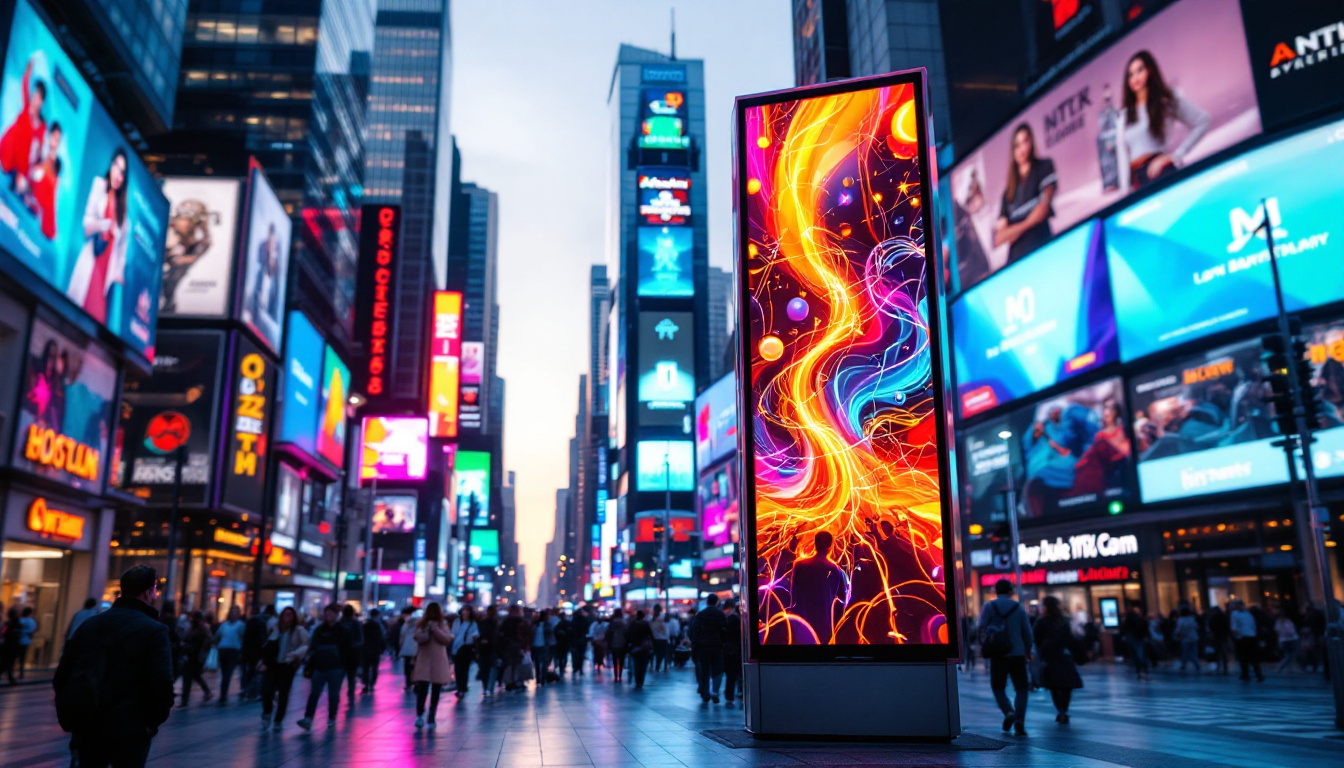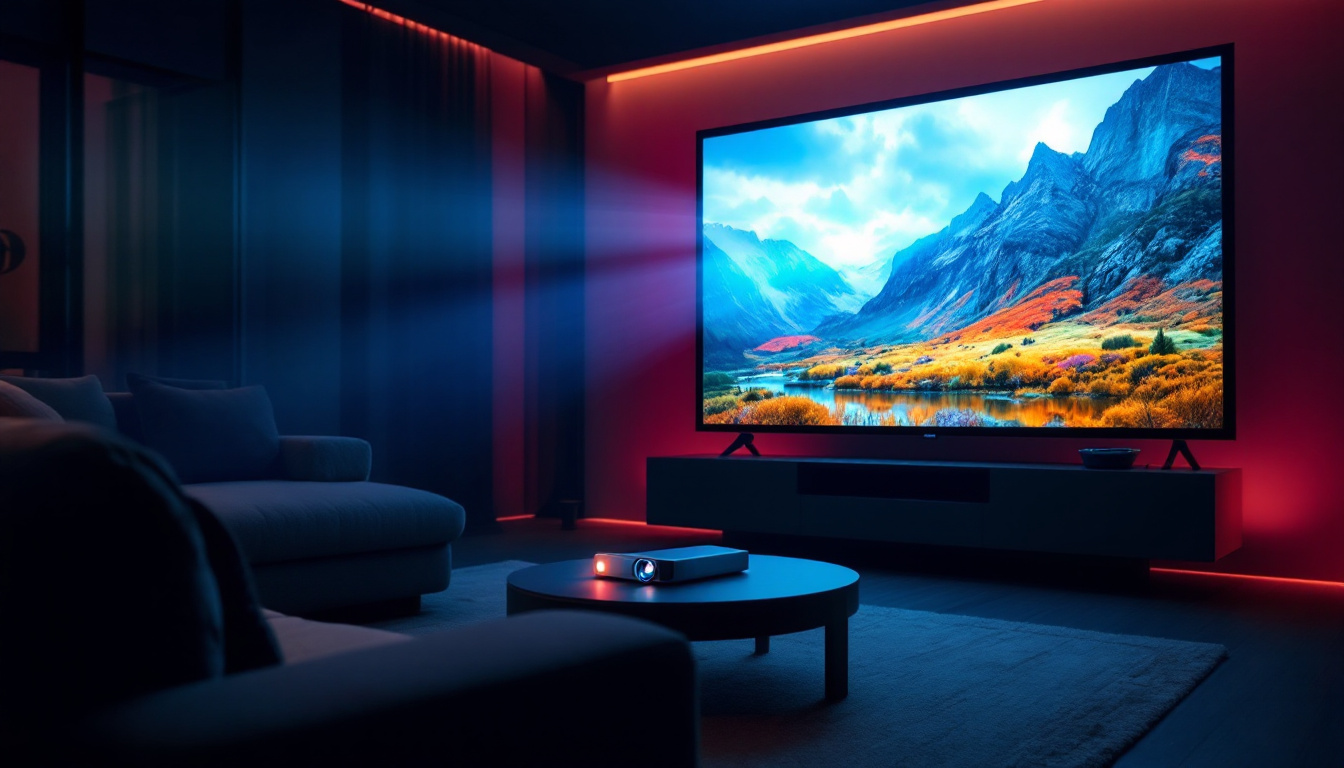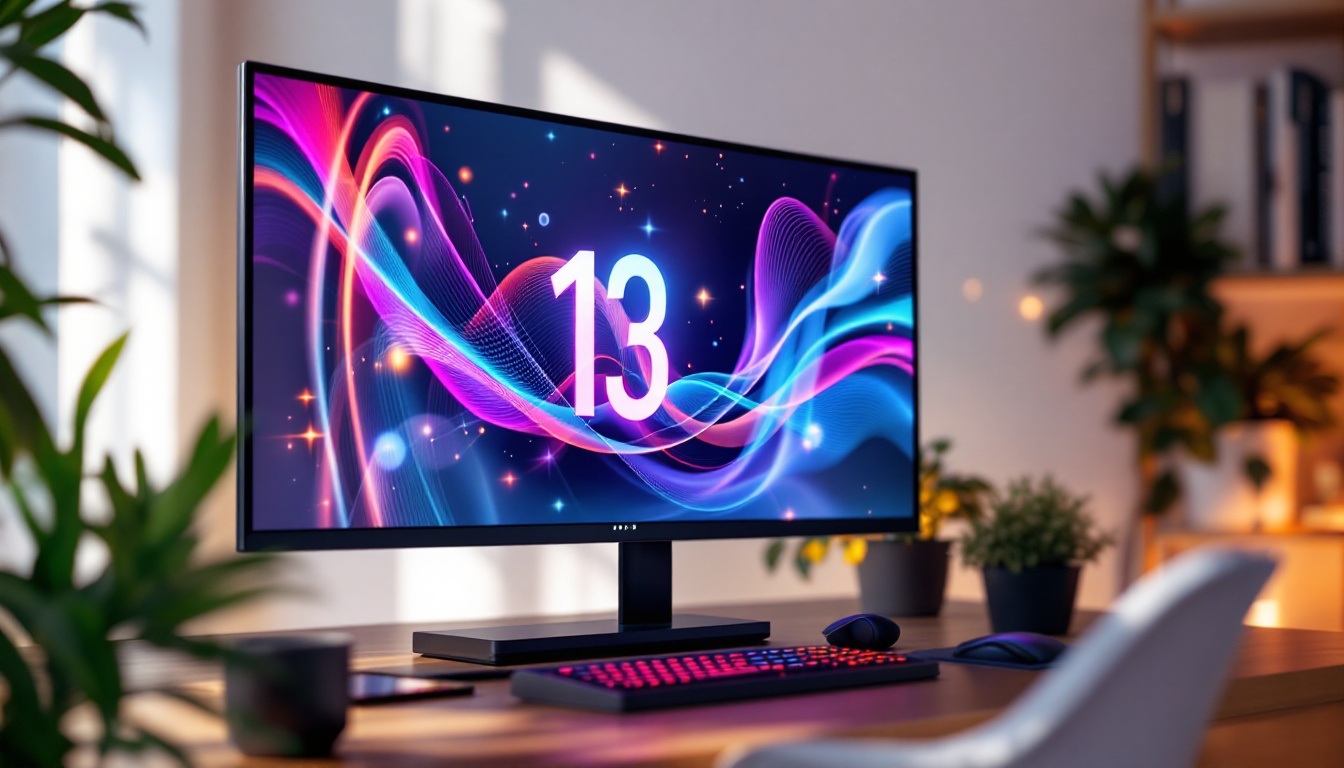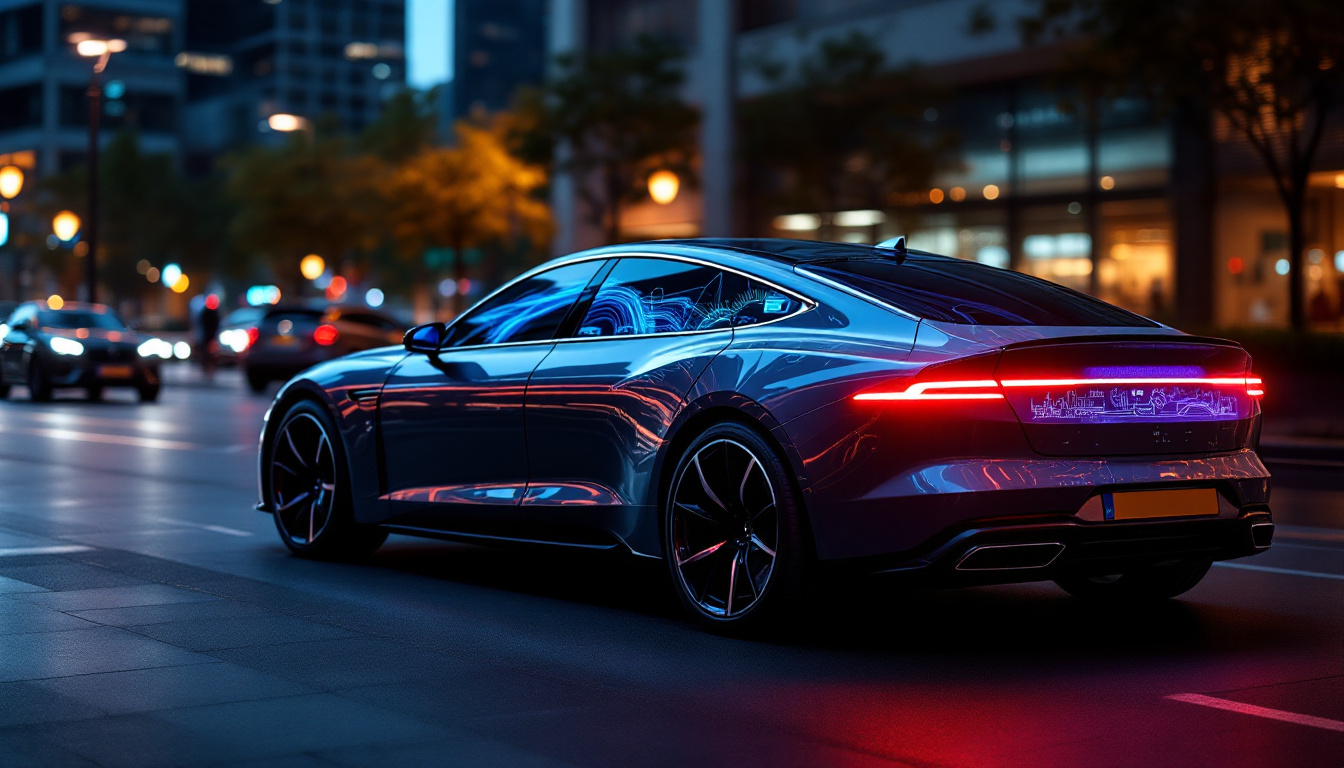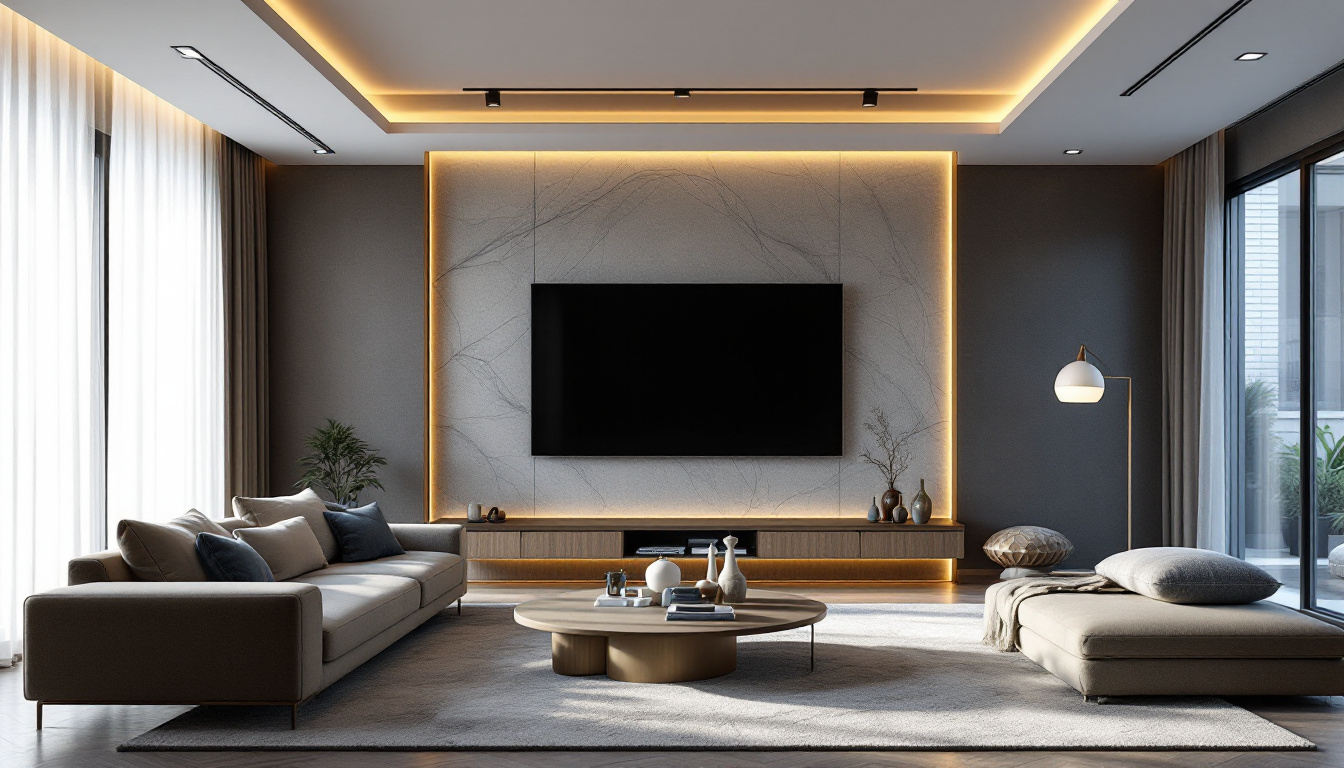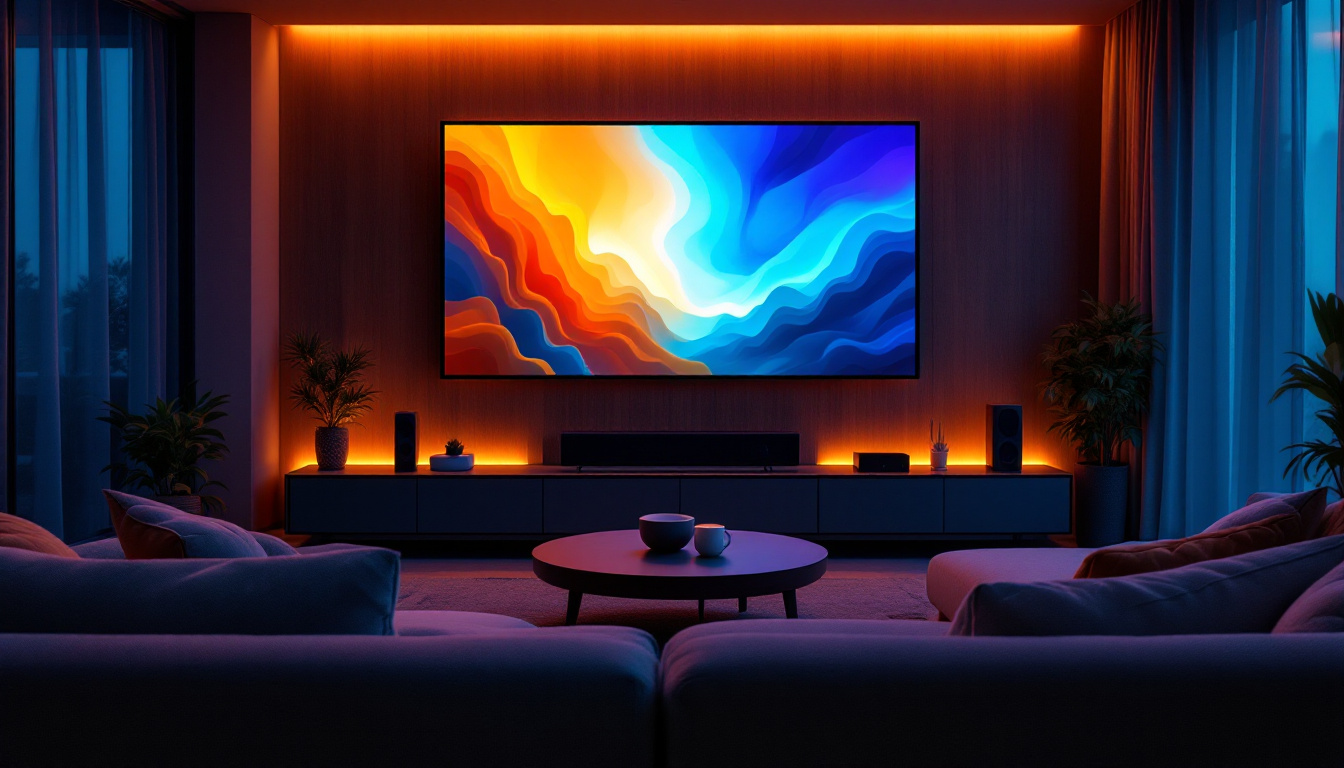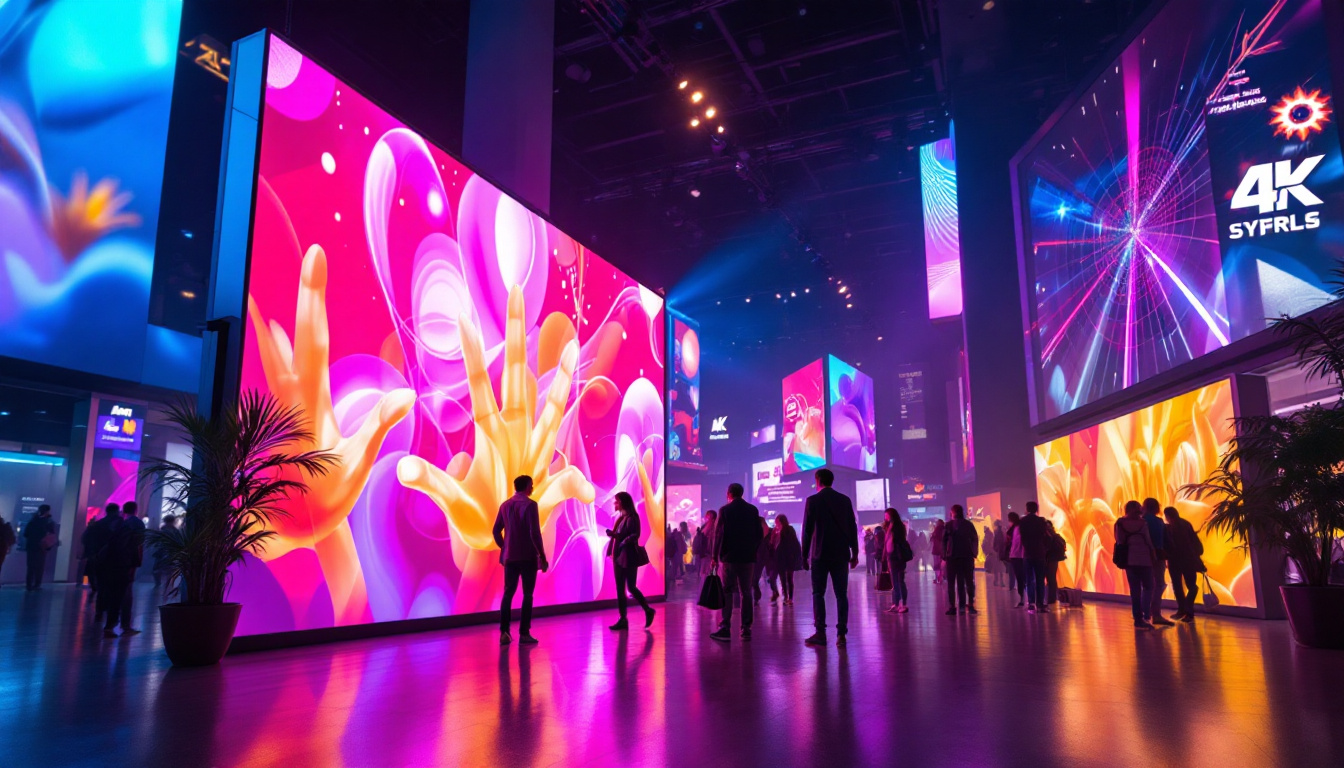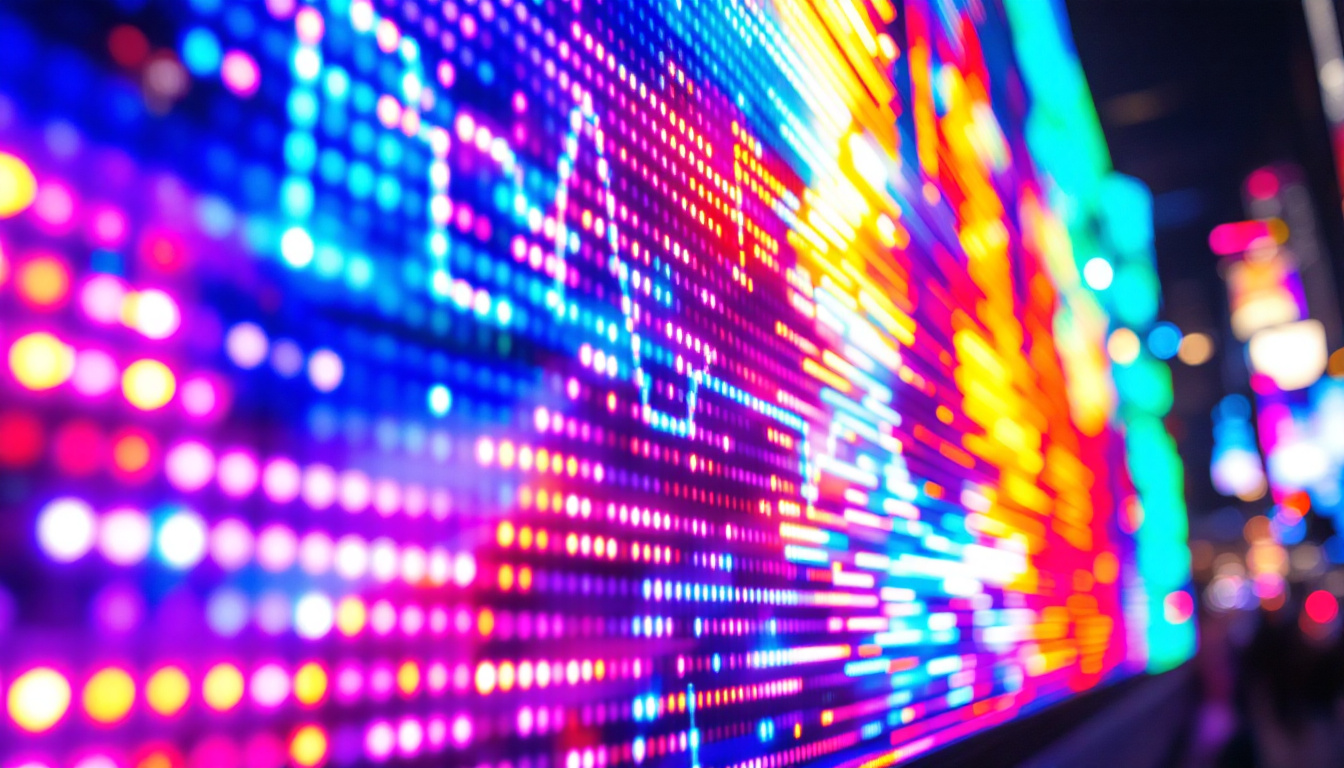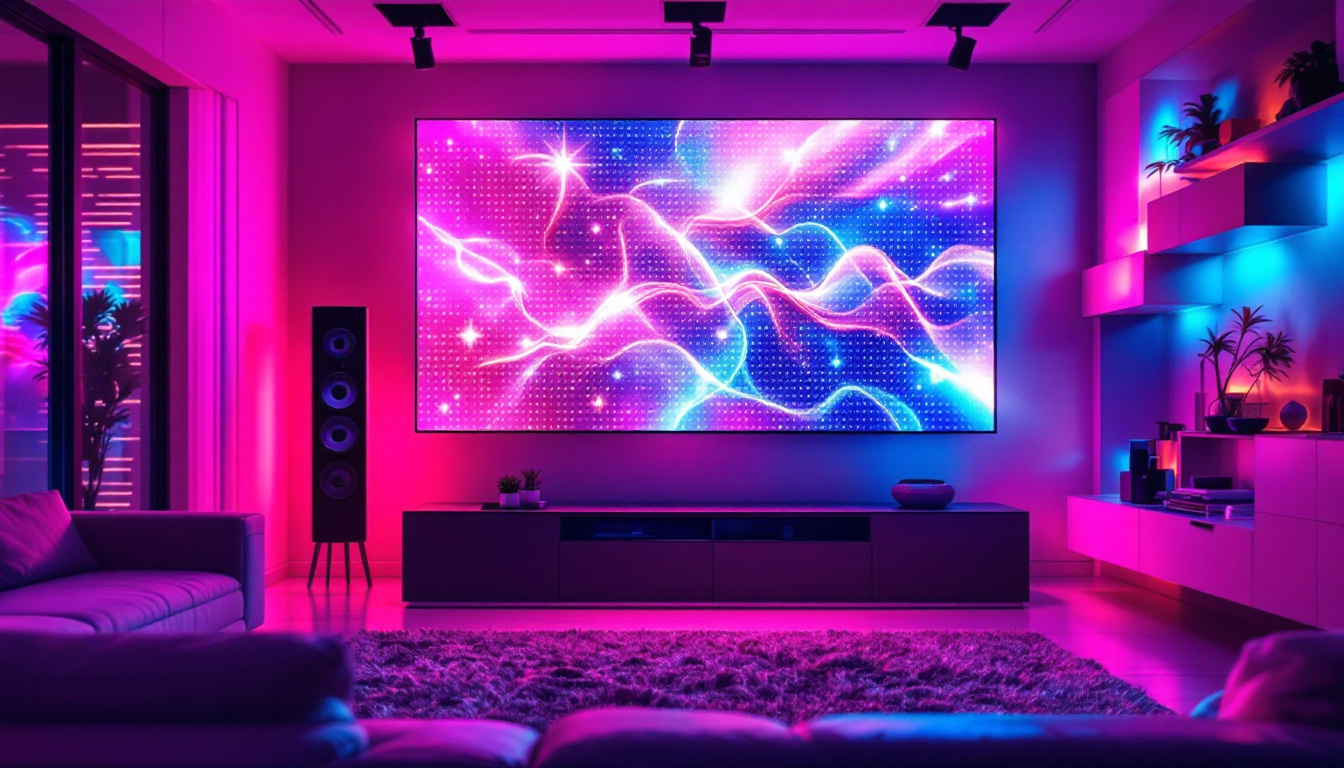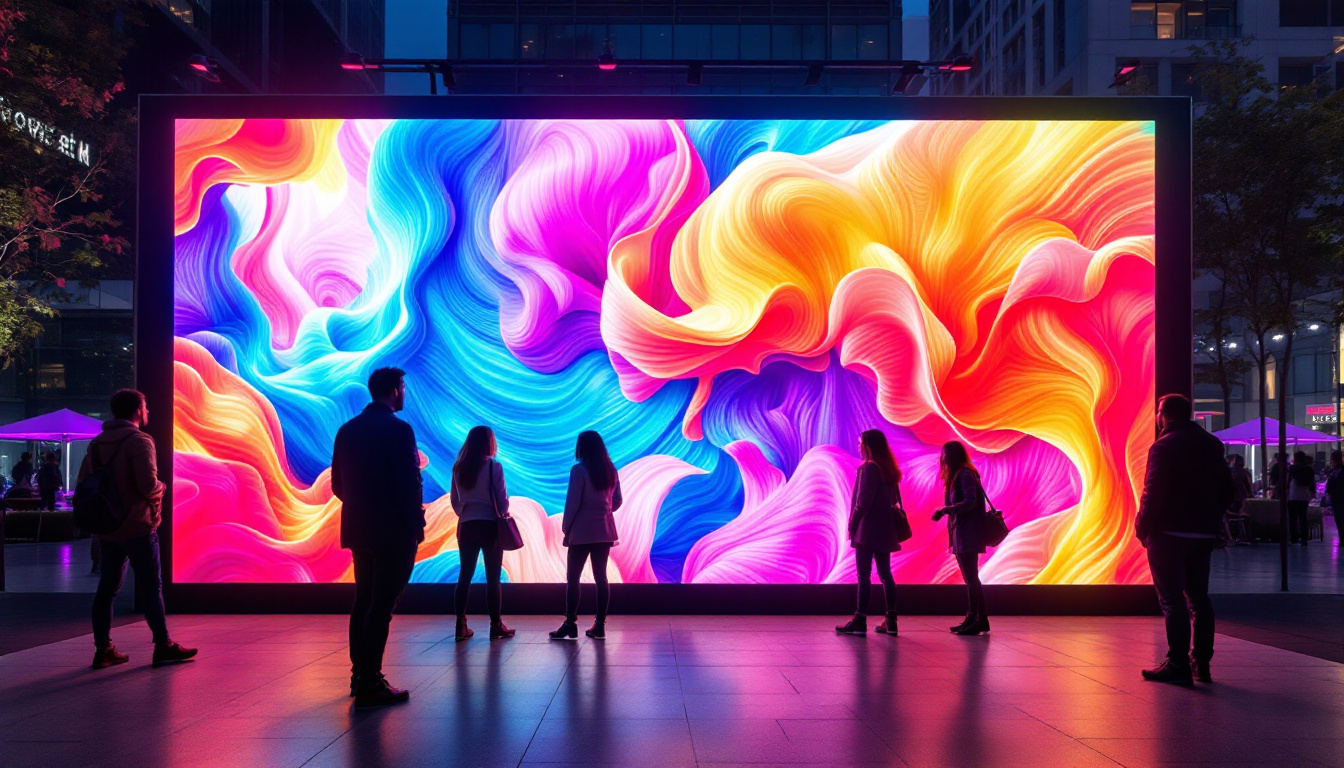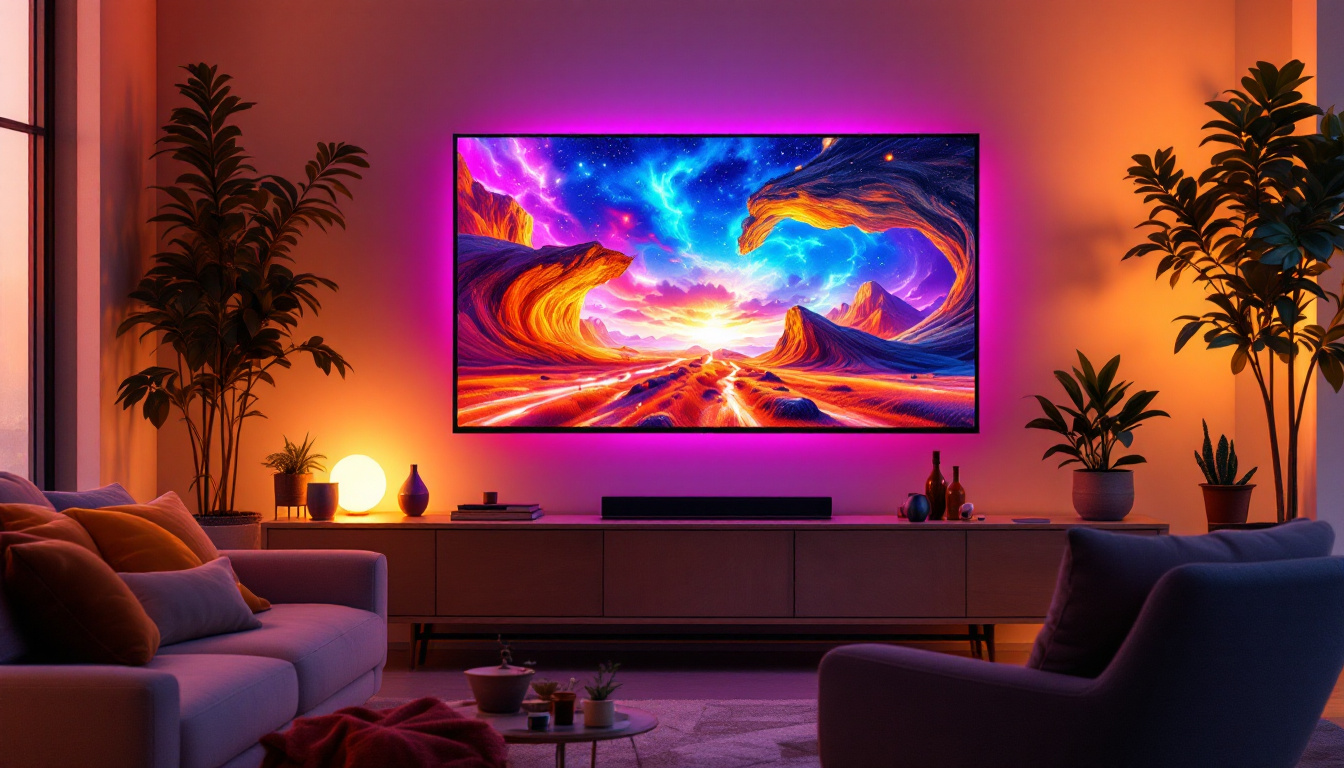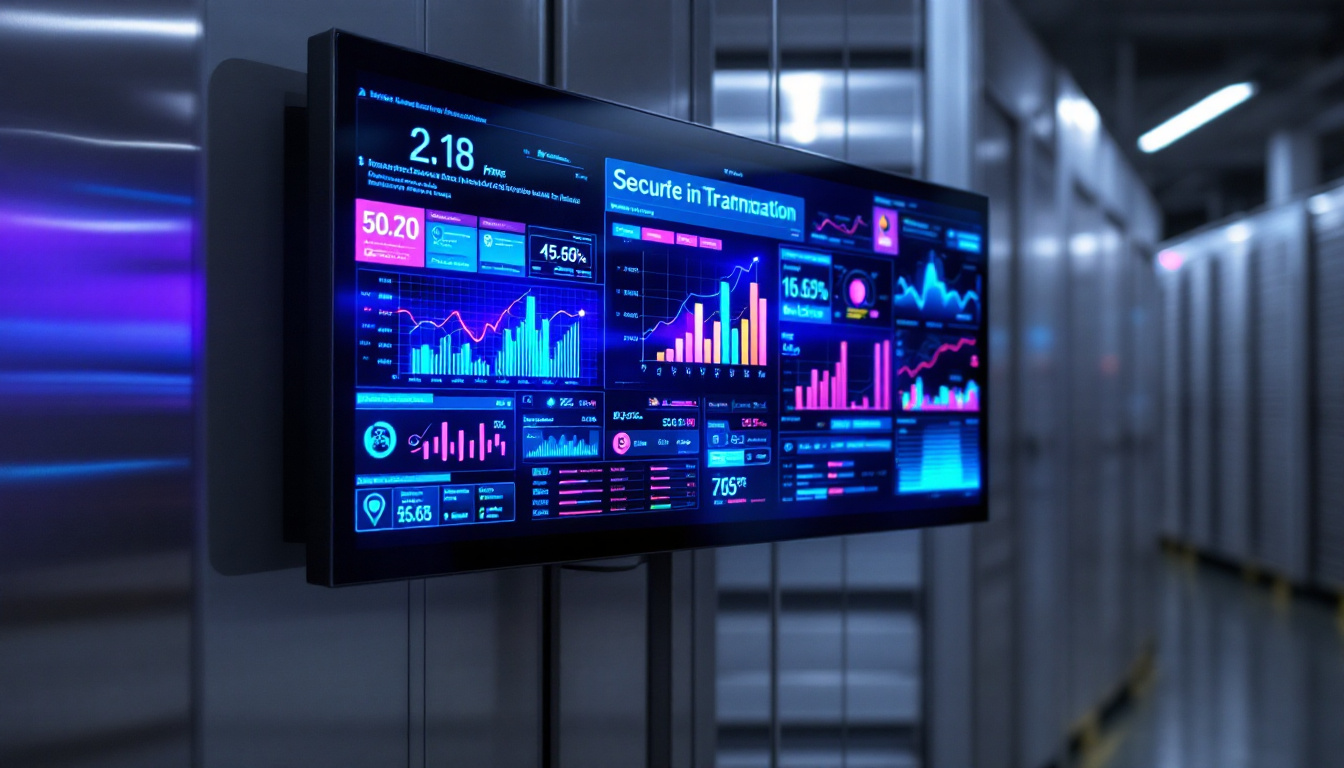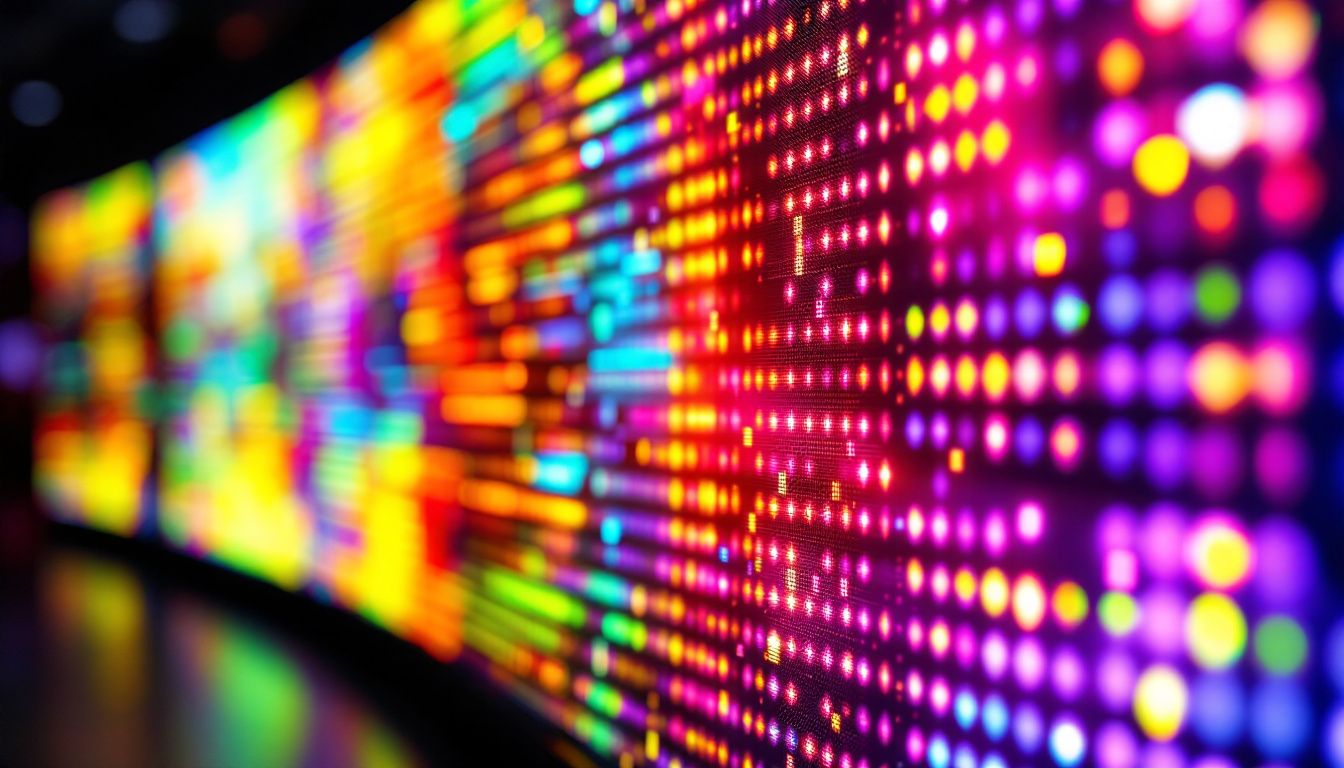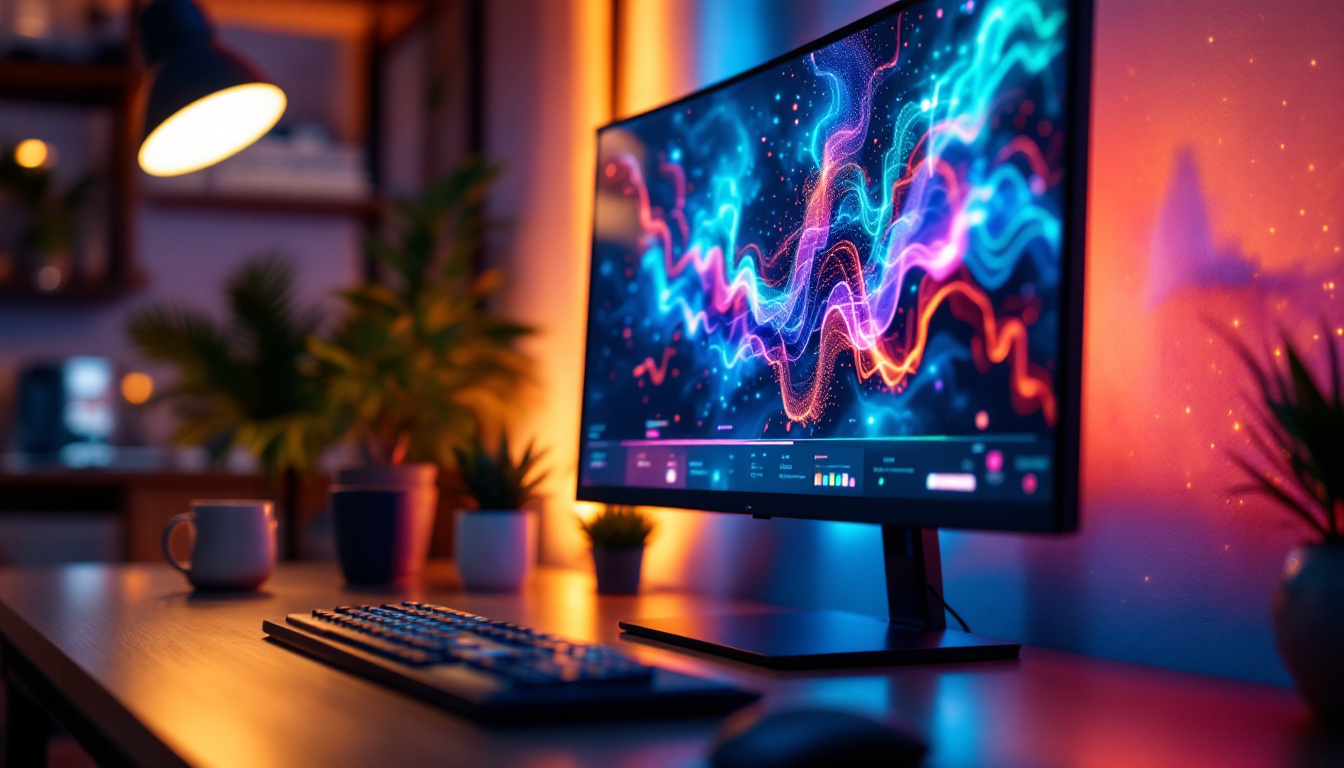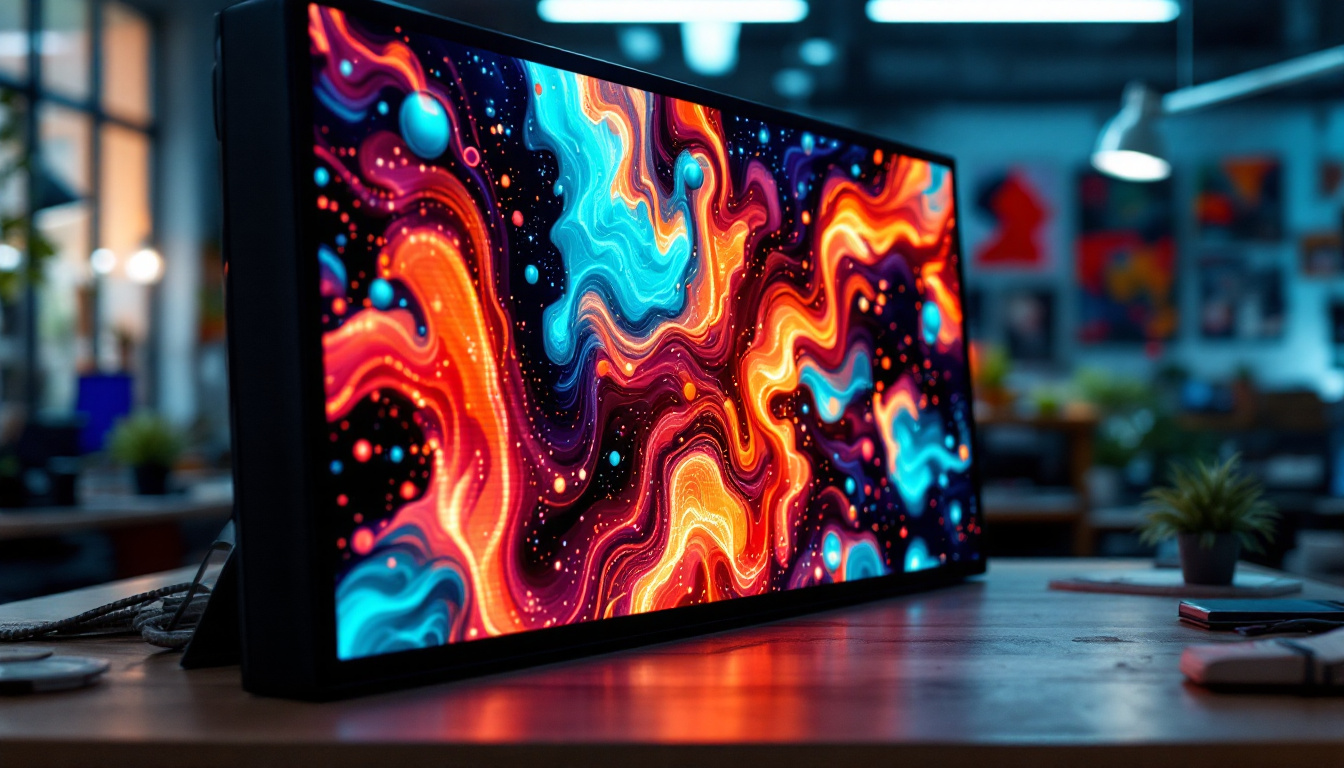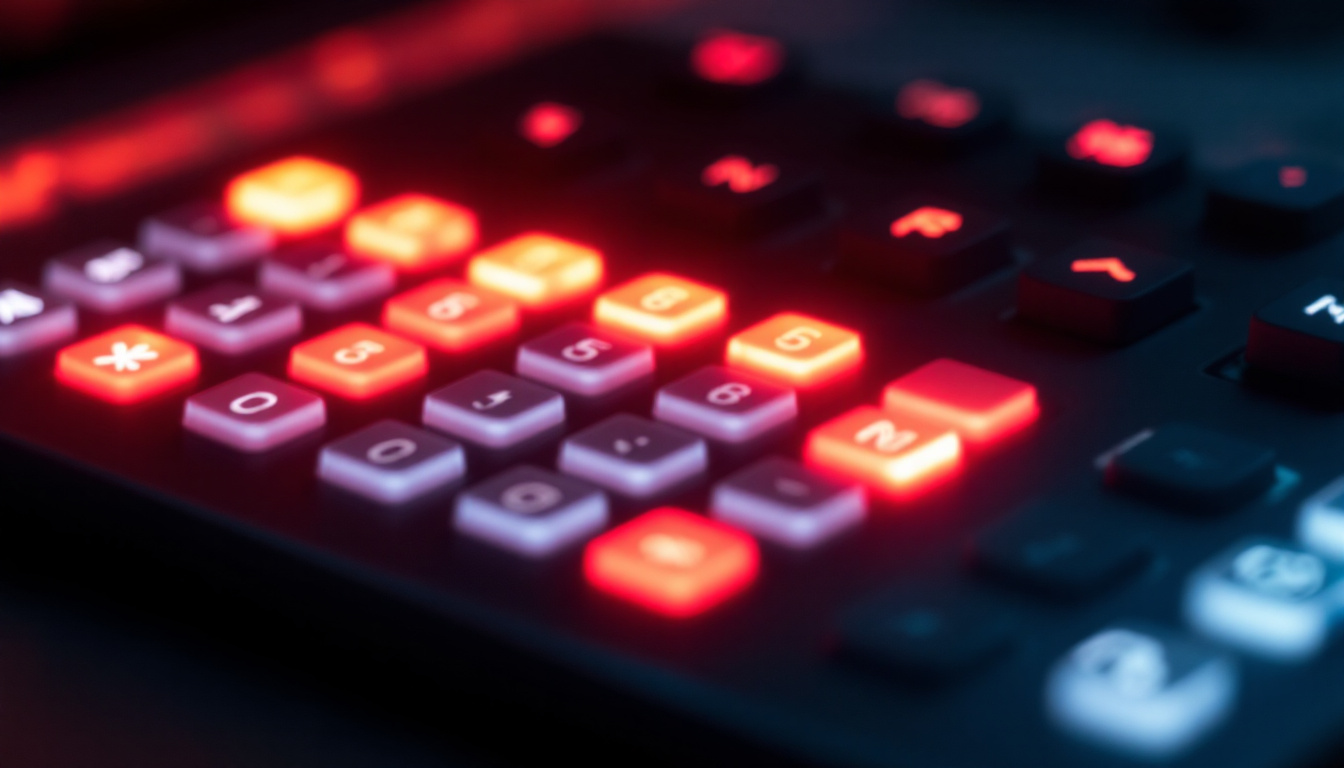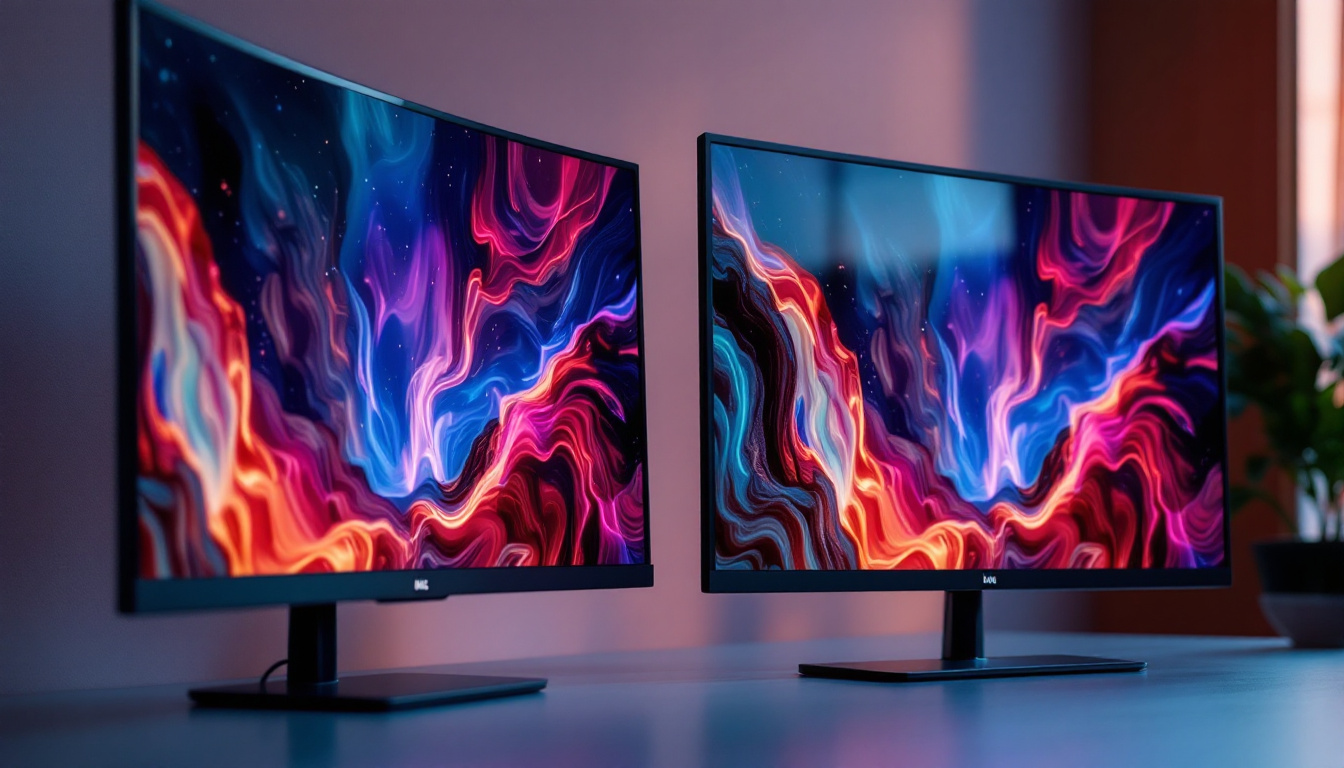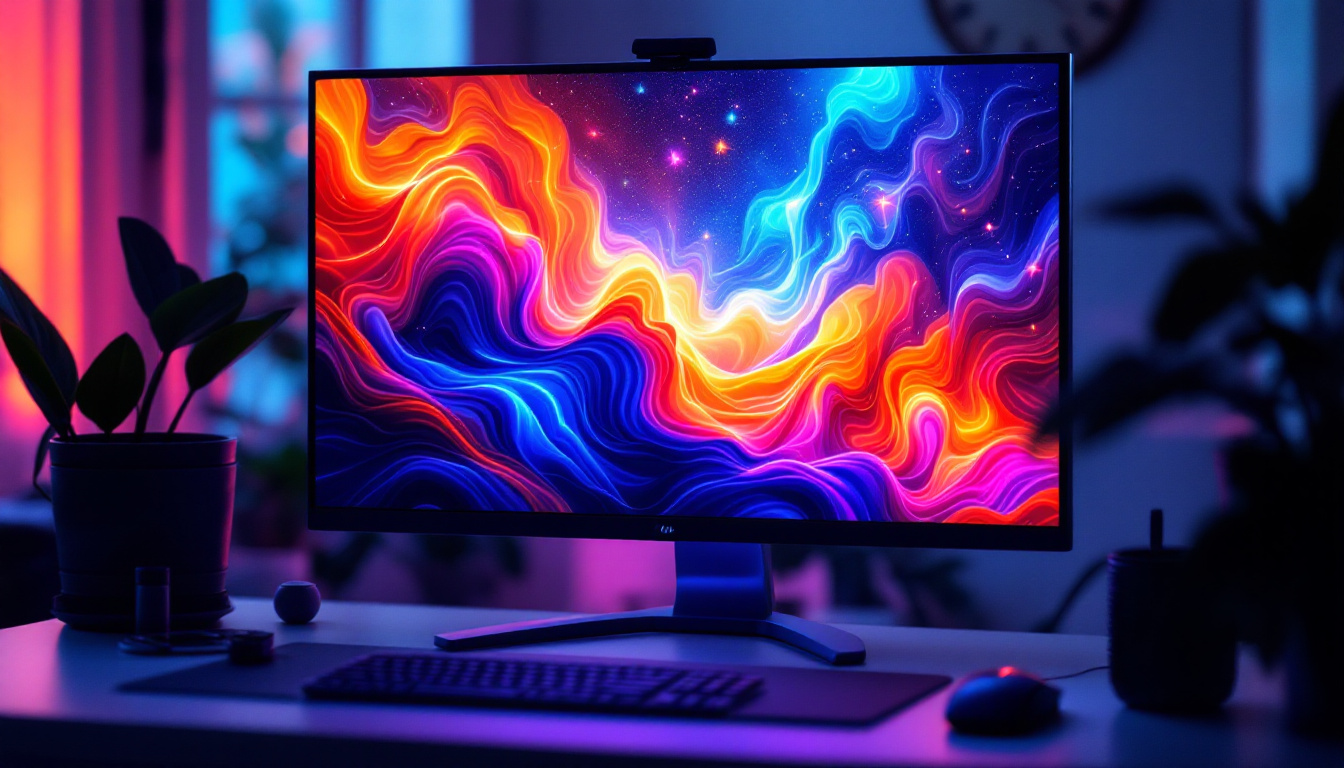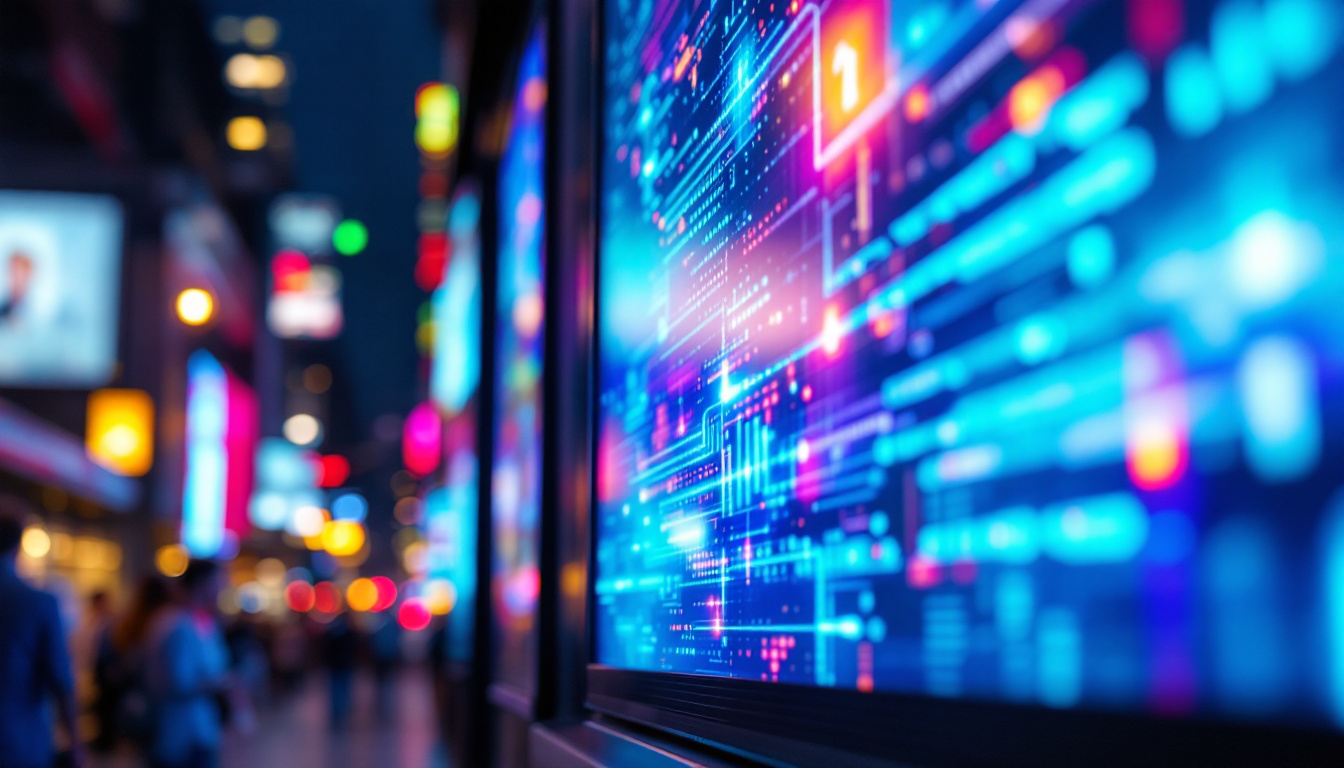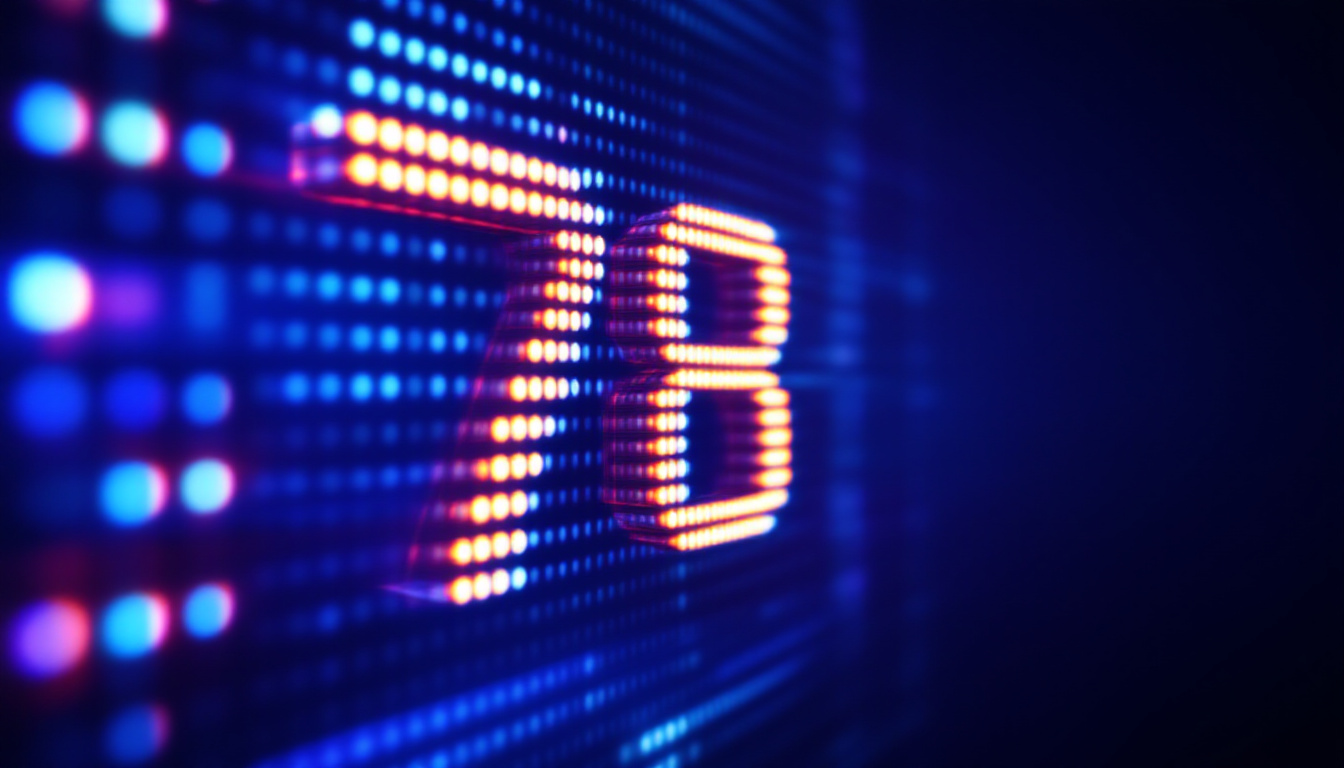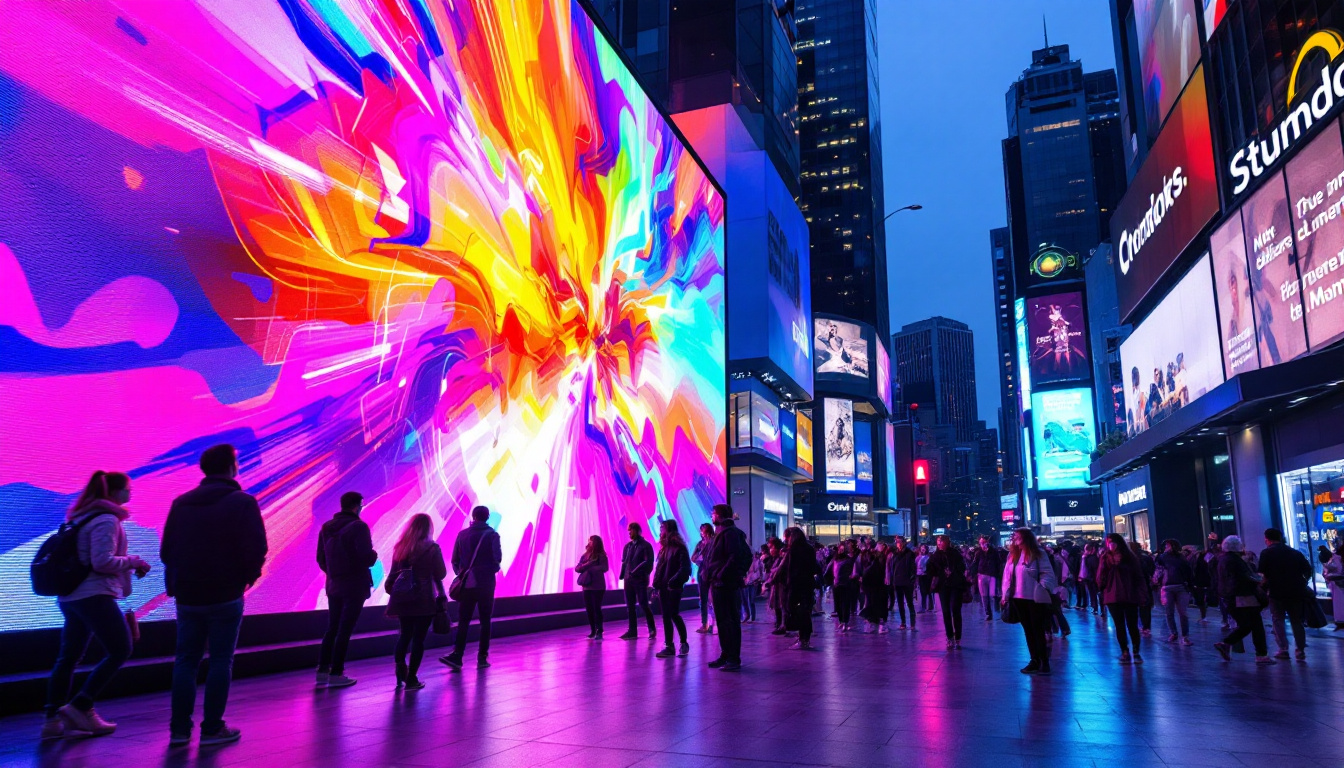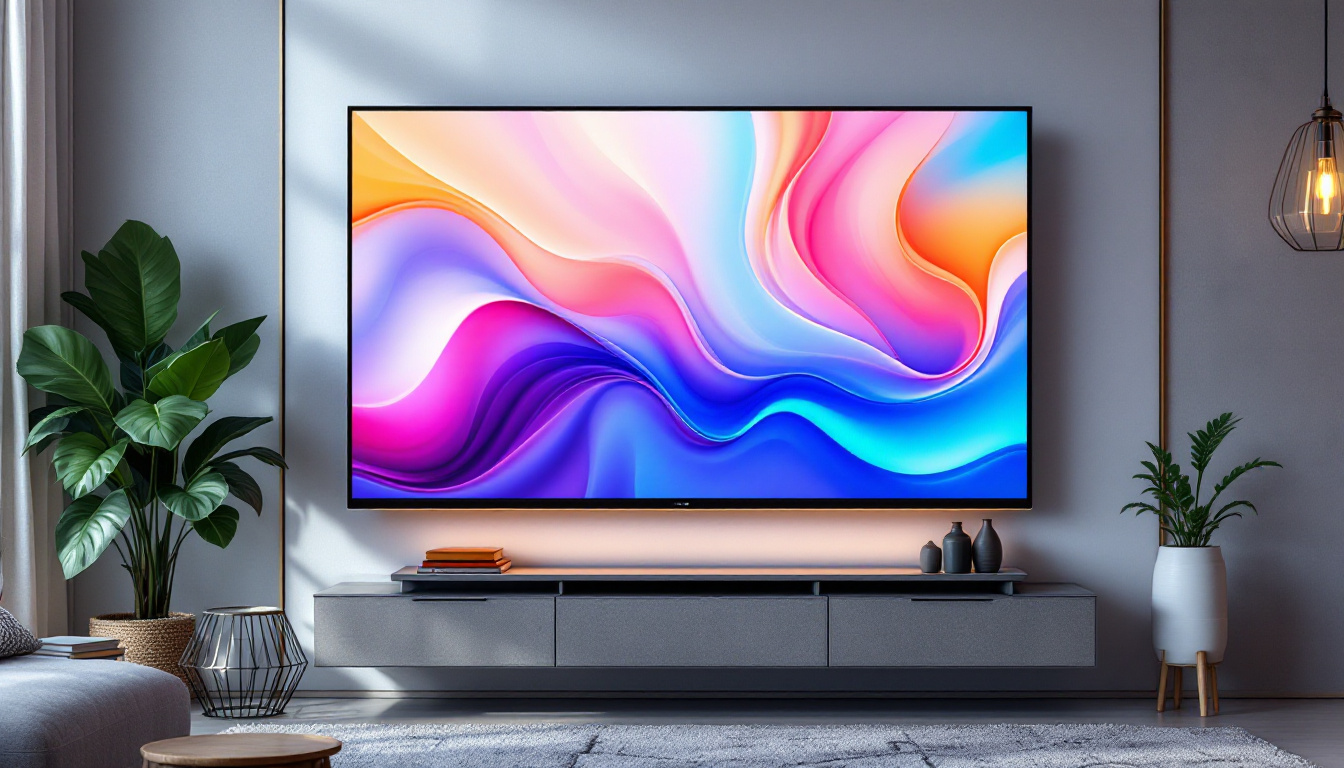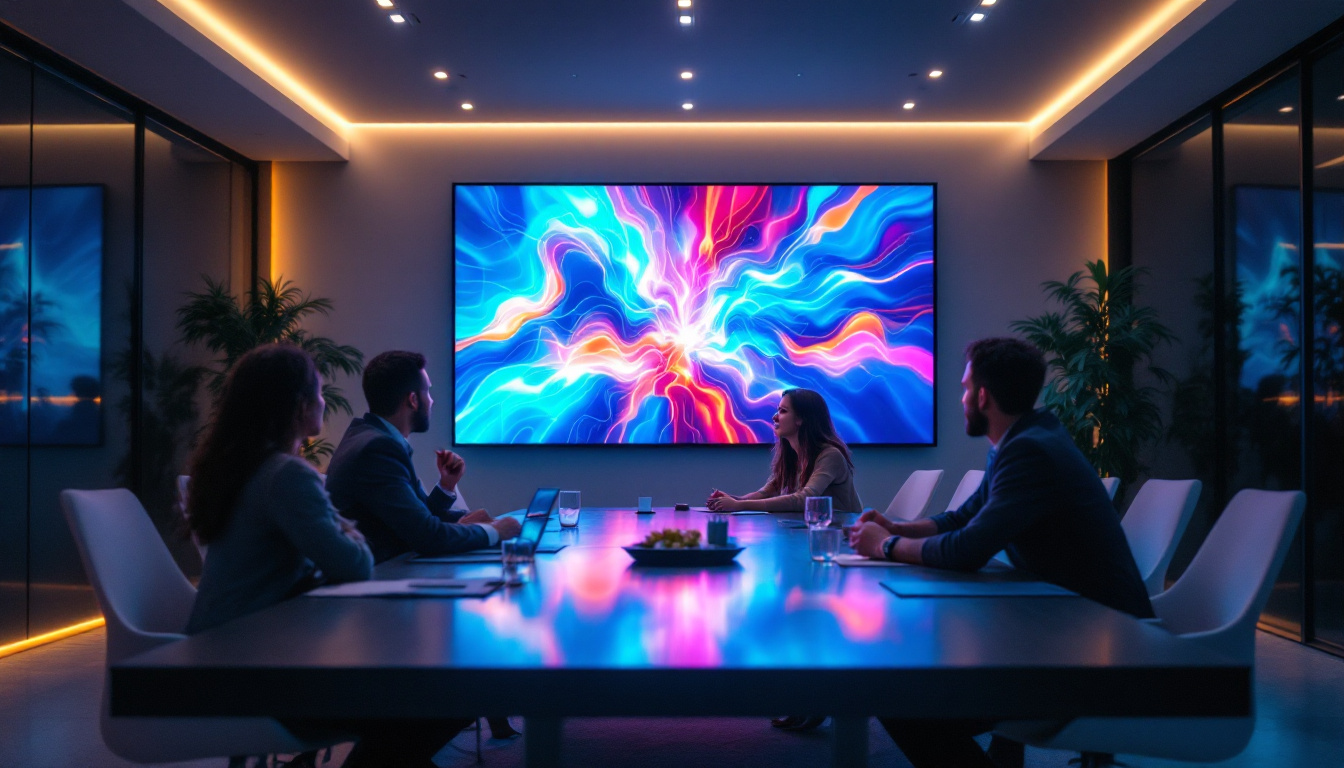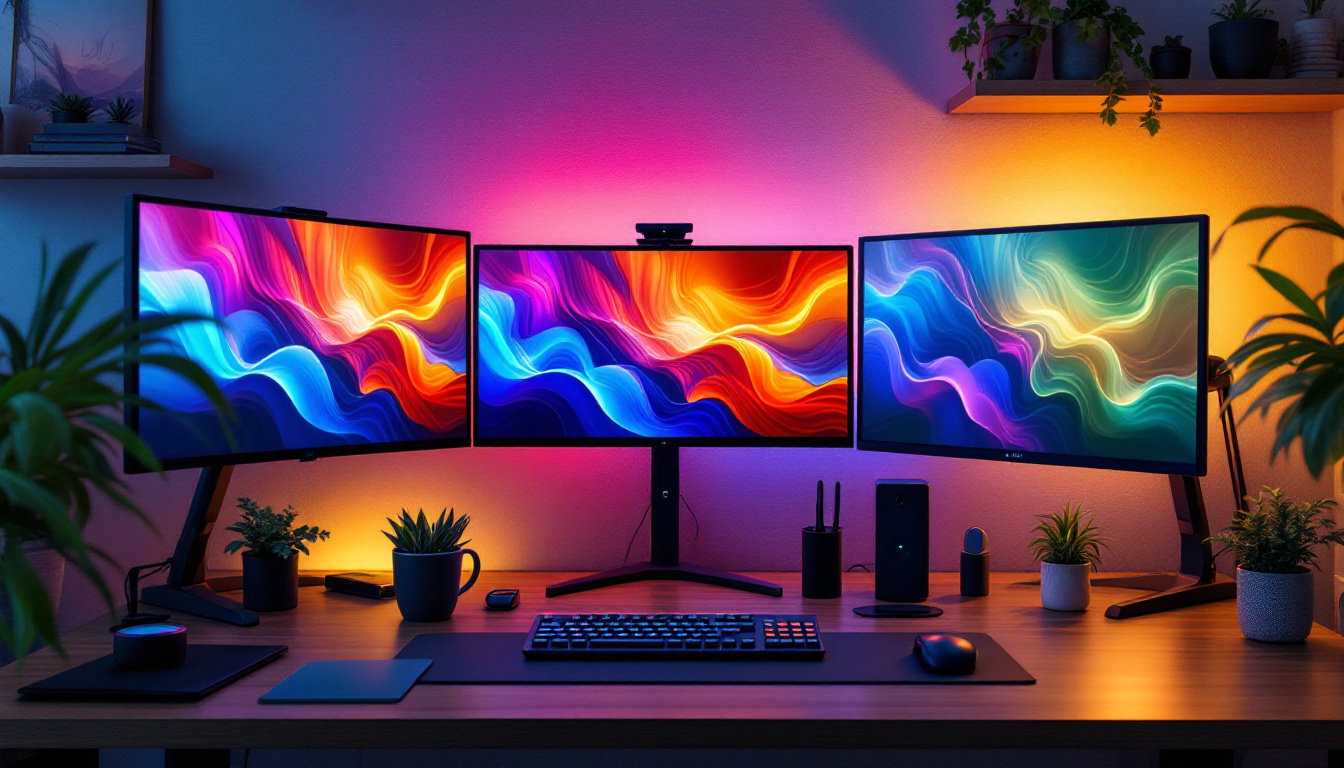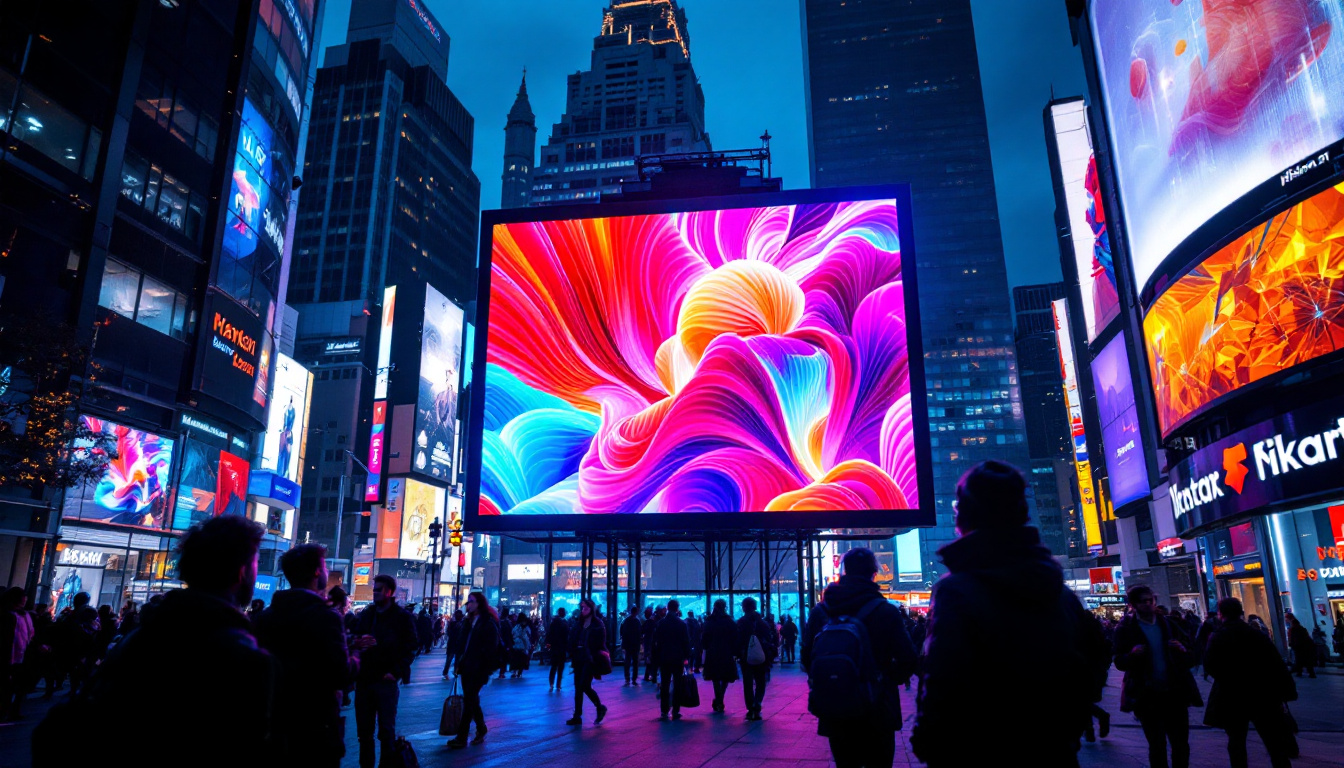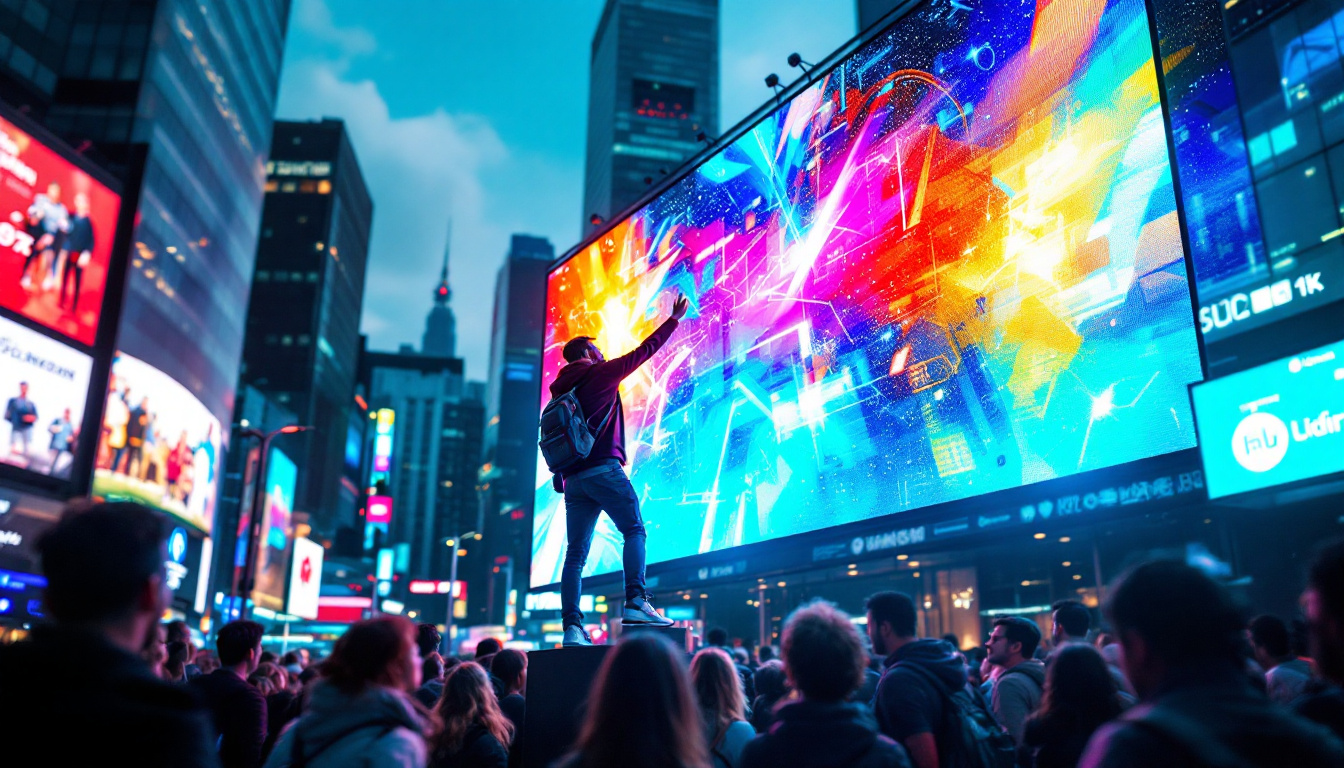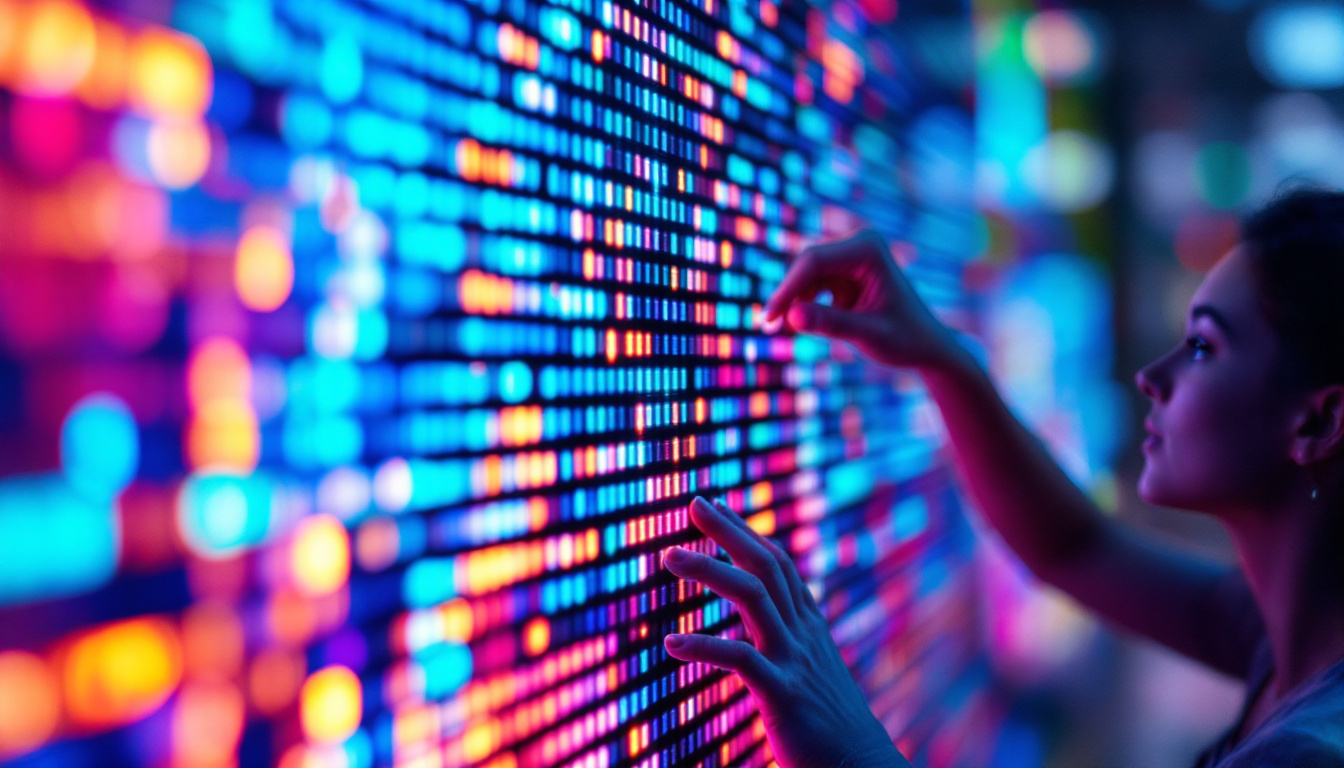In the world of advertising and information dissemination, LED displays have emerged as a transformative technology. Their vibrant colors, dynamic content capabilities, and energy efficiency make them a preferred choice for businesses and organizations. This article delves into the intricacies of LED displays, their applications, benefits, and the technology that powers them.
Understanding LED Displays
LED, or Light Emitting Diode, displays utilize semiconductor technology to produce light. Unlike traditional display technologies, LED displays are composed of numerous tiny diodes that emit light when an electric current passes through them. This fundamental difference in technology allows for brighter, more colorful, and more energy-efficient displays.
Types of LED Displays
LED displays come in various forms, each designed for specific applications. The most common types include:
- Indoor LED Displays: These are typically used in shopping malls, airports, and conference centers. They provide high-resolution images and are designed to be viewed from short distances.
- Outdoor LED Displays: Built to withstand harsh weather conditions, these displays are often used for billboards, sports arenas, and public events. They feature higher brightness levels to ensure visibility in direct sunlight.
- Transparent LED Displays: A relatively new innovation, transparent LED displays allow for visibility through the screen while still displaying content. They are often used in retail environments to create eye-catching advertisements without obstructing views.
How LED Displays Work
The operation of LED displays is based on a simple principle: when a voltage is applied to a diode, it emits light. The color of the light depends on the materials used in the diode. By combining red, green, and blue LEDs, a full spectrum of colors can be created, allowing for stunning visuals.
Each pixel in an LED display is made up of these three colors, and by adjusting the intensity of each color, a wide range of hues can be produced. This capability is what makes LED displays so appealing for dynamic content, such as video or animations.
Moreover, the modular nature of LED displays allows for flexibility in size and shape, making them suitable for a variety of installations. From massive outdoor screens that dominate city skylines to intricate indoor designs that fit seamlessly into architectural features, LED technology can adapt to meet diverse aesthetic and functional needs. This versatility has led to their increasing adoption in art installations, where artists leverage the vibrant colors and dynamic capabilities of LED displays to create immersive experiences.
Another significant advantage of LED displays is their longevity and low maintenance requirements. Unlike traditional display technologies that may require frequent replacements or repairs, LED displays can last tens of thousands of hours with minimal degradation in quality. This durability not only reduces operational costs but also contributes to sustainability efforts, as fewer resources are consumed over time. As technology continues to evolve, innovations such as smart LED displays, which integrate sensors and connectivity features, are paving the way for even more interactive and engaging visual experiences.
Applications of LED Displays
LED displays are versatile and can be found in a variety of settings. Their applications range from advertising to information sharing, making them an integral part of modern communication strategies.
Advertising and Marketing
One of the most prominent uses of LED displays is in advertising. Businesses leverage the eye-catching nature of these displays to attract customers. Whether it’s a large billboard on a busy street or a smaller display in a retail store, LED technology enables dynamic content that can be updated in real-time.
Moreover, LED displays can be programmed to display targeted advertisements based on factors such as time of day or audience demographics, enhancing the effectiveness of marketing campaigns.
In addition to traditional advertising, LED displays have opened new avenues for interactive marketing. For example, some businesses use touch-sensitive LED screens that allow customers to engage directly with the content, such as playing games or accessing special promotions. This interactive element not only captivates potential buyers but also fosters a deeper connection between the brand and its audience, leading to increased customer loyalty.
Public Information Displays
LED displays are also widely used for public information purposes. Transportation hubs like airports and train stations utilize them to provide real-time updates on arrivals and departures. Similarly, municipalities use LED displays for public announcements, emergency alerts, and community events.
The clarity and visibility of LED displays ensure that important information reaches the public promptly, making them an essential tool for effective communication.
Beyond transportation, LED displays play a crucial role in educational settings. Schools and universities are increasingly adopting LED technology for digital signage to convey important announcements, event schedules, and even educational content. This not only enhances the learning environment but also keeps students and staff informed in a visually engaging manner, fostering a sense of community and involvement.
Entertainment and Events
In the entertainment industry, LED displays have revolutionized the way audiences experience events. Concerts, sports games, and festivals often feature large LED screens that enhance the visual experience. These displays can show live feeds, graphics, and animations, creating an immersive environment for attendees.
Additionally, LED displays are frequently used in theme parks and attractions, where they contribute to storytelling and thematic experiences, captivating visitors of all ages.
Furthermore, the versatility of LED technology allows for innovative stage designs in theatrical productions and live performances. With the ability to create stunning backdrops and dynamic visuals, LED displays can transform a simple stage into a breathtaking spectacle. This integration not only elevates the artistic expression of the performance but also engages the audience on multiple sensory levels, making each event a memorable experience.
Benefits of LED Displays
The advantages of LED displays extend beyond their visual appeal. They offer a range of benefits that make them a smart investment for businesses and organizations.
Energy Efficiency
One of the standout features of LED technology is its energy efficiency. LED displays consume significantly less power compared to traditional display technologies, such as LCD or projection systems. This reduction in energy consumption not only lowers operational costs but also contributes to environmental sustainability.
Furthermore, many LED displays come with advanced features such as automatic brightness adjustment, which optimizes energy use based on ambient light conditions.
Longevity and Durability
LED displays are known for their longevity. With a lifespan that can exceed 100,000 hours, they require less frequent replacement compared to other display types. This durability is particularly beneficial for outdoor applications, where displays are exposed to the elements.
Additionally, LED technology is resilient to shock and vibration, making it suitable for various environments, from bustling city streets to dynamic event spaces.
High Visibility and Quality
The brightness and clarity of LED displays are unmatched. They can achieve high levels of luminance, ensuring visibility even in bright sunlight. This makes them ideal for outdoor advertising and public information displays.
Moreover, the high-resolution capabilities of LED technology allow for crisp images and vibrant colors, enhancing the overall viewing experience. Whether it’s a static advertisement or a dynamic video, LED displays deliver exceptional quality.
Challenges and Considerations
Despite their many advantages, LED displays are not without challenges. Understanding these challenges is crucial for businesses considering the adoption of this technology.
Initial Investment Costs
One of the primary barriers to entry for many businesses is the initial investment cost associated with LED displays. While prices have decreased over the years, high-quality LED displays can still represent a significant financial commitment.
However, it is essential to consider the long-term savings in energy costs and maintenance, which can offset the initial expenditure over time.
Content Management
Another challenge is the need for effective content management. To maximize the benefits of LED displays, businesses must invest in content creation and management systems. This includes designing engaging visuals and ensuring that content is updated regularly to keep audiences interested.
Without a strategic approach to content management, the potential of LED displays may not be fully realized, leading to missed opportunities.
Regulatory Compliance
In some regions, there are regulations governing the use of LED displays, particularly for outdoor advertising. Businesses must be aware of these regulations to avoid fines or legal issues. Compliance may involve restrictions on brightness levels, content types, and placement.
Staying informed about local laws and regulations is essential for businesses to operate within legal boundaries while effectively utilizing LED technology.
The Future of LED Displays
The future of LED displays looks promising, with continuous advancements in technology and design. Innovations are expected to enhance the capabilities and applications of LED displays even further.
Integration with Smart Technology
As smart technology continues to evolve, the integration of LED displays with IoT (Internet of Things) devices is becoming increasingly common. This integration allows for real-time data sharing and dynamic content updates based on various inputs, such as audience engagement or environmental conditions.
For instance, a retail store could use data from foot traffic sensors to display targeted promotions on its LED display, enhancing customer experiences and driving sales.
Improved Resolution and Flexibility
Future developments are likely to focus on improving the resolution of LED displays, making them suitable for even more applications. Advances in microLED technology promise to deliver higher pixel densities, resulting in sharper images and more detailed visuals.
Additionally, flexible LED displays are gaining traction, allowing for creative installations that were previously impossible. These displays can be bent and shaped to fit unconventional spaces, opening up new avenues for advertising and design.
Sustainability Initiatives
With growing concerns about environmental impact, the LED display industry is also moving towards more sustainable practices. Manufacturers are exploring eco-friendly materials and production methods, as well as recycling programs for old displays.
This shift towards sustainability not only addresses environmental concerns but also appeals to consumers who are increasingly conscious of their purchasing decisions.
Conclusion
LED displays have revolutionized the way information is communicated and advertisements are presented. Their vibrant visuals, energy efficiency, and versatility make them an invaluable tool for businesses and organizations across various sectors. While challenges exist, the benefits far outweigh the drawbacks, especially when considering the future advancements in technology.
As the demand for dynamic and engaging content continues to grow, LED displays will undoubtedly play a pivotal role in shaping the future of advertising and information dissemination. Embracing this technology offers businesses the opportunity to stand out in a crowded marketplace, ensuring they capture the attention of their target audiences effectively.
Discover LumenMatrix LED Display Solutions
Ready to elevate your visual communication with the latest in LED display technology? Look no further than LumenMatrix, where innovation meets impact. Our comprehensive range of LED display solutions, from Indoor and Outdoor LED Walls to specialized options like Vehicle, Sports, and Floor LED Displays, is designed to captivate your audience and amplify your message. Experience the future of dynamic and engaging content with LumenMatrix’s custom and all-in-one LED displays. Check out LumenMatrix LED Display Solutions today and transform your brand’s visibility with unparalleled clarity and vibrancy.

